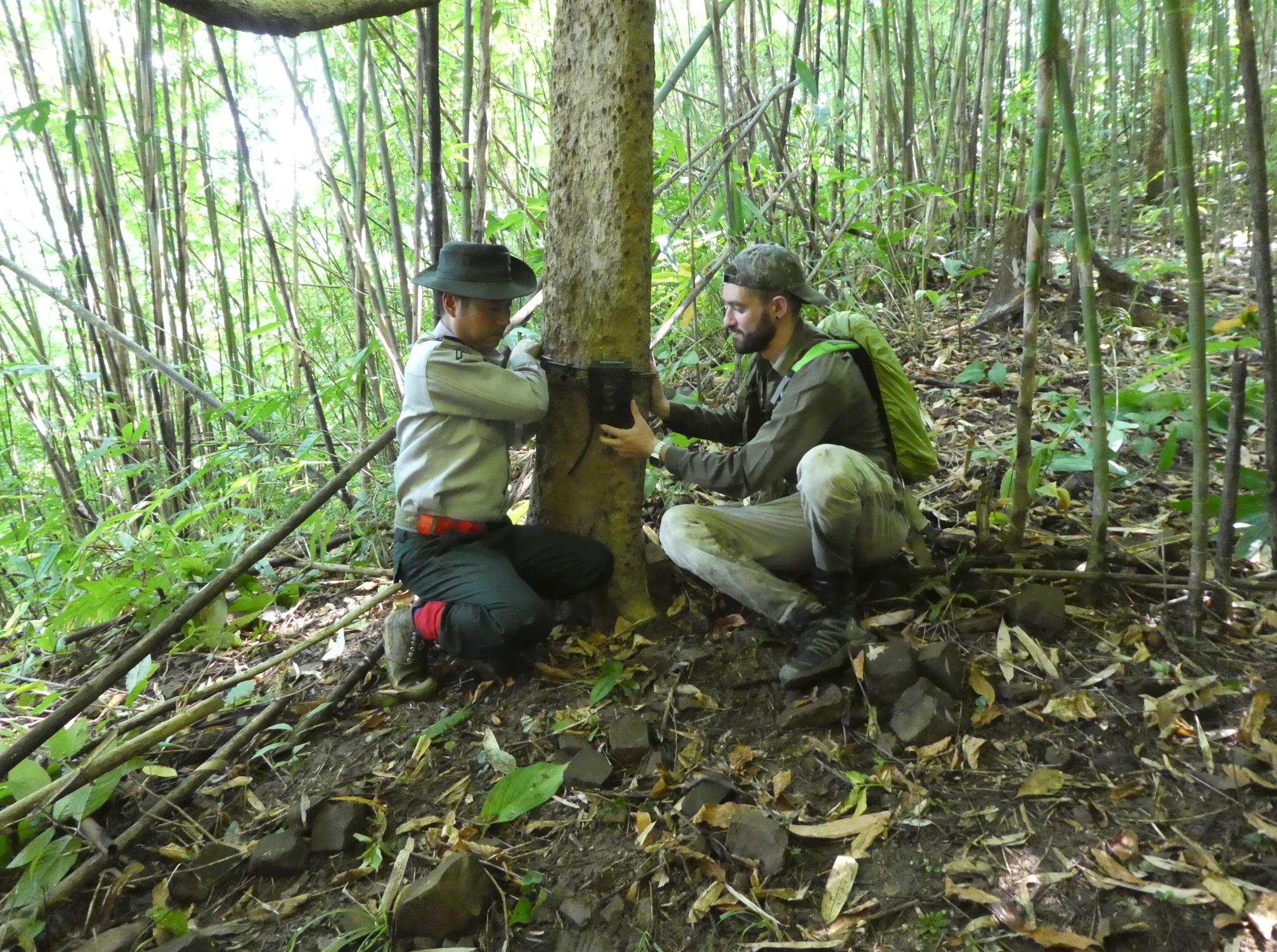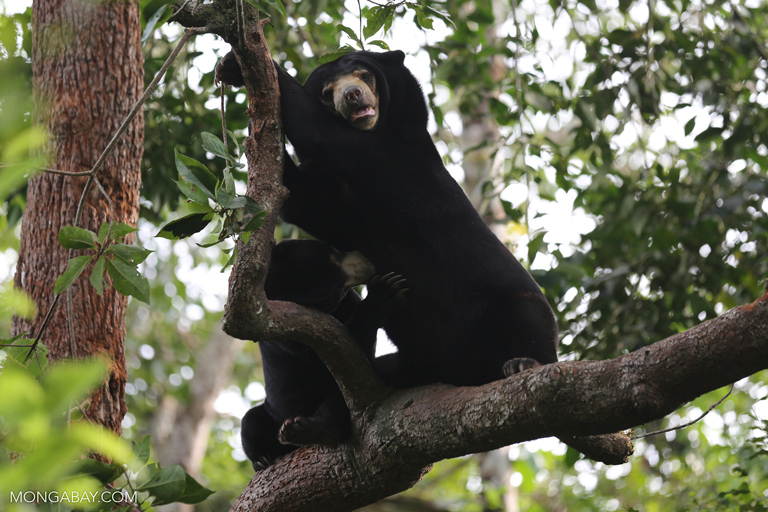
- Combating illegal logging in Myanmar’s Rakhine state helps preserve wildlife populations, but is insufficient without addressing unsustainable local hunting pressures, according to new research.
- Researchers used camera trap data from between 2016 and 2019 to investigate the effects of environmental and human factors on medium to large mammals.
- Common species regularly targeted for bushmeat were negatively affected by increased human presence, they found, highlighting the pressures of illegal hunting on their populations.
- By contrast, threatened species were generally unaffected by human presence, but were positively linked to continuous stretches of evergreen forest, indicating their vulnerability to illegal logging, deforestation and habitat loss.
Combating illegal logging and deforestation in the tropical forests of southwest Myanmar helps preserve wildlife populations, but remains insufficient in the face of unsustainable local hunting pressures, a new study has found.
Researchers, whose work was published in Animal Conservation in November, used camera trap data from between 2016 and 2019 to map the activity patterns of humans and other medium to large mammals in Rakhine state.
They then modeled the effect of environmental and human factors — such as percentage of continuous evergreen forest, distance from settlements, and presence of humans as caught on camera trap footage — on selected mammal species.

They found common species regularly targeted for bushmeat, such as the northern red muntjac (Muntiacus vaginalis) and Malayan porcupine (Hystrix brachyura), to be negatively affected by increased human presence, highlighting the pressures of illegal hunting on their populations.
By contrast, threatened species such as the sun bear (Helarctos malayanus) and northern pig-tailed macaque (Macaca leonina) were generally unaffected by human presence. But they were positively linked to continuous stretches of evergreen forest, making them more vulnerable to habitat loss from illegal logging and deforestation.

“Threatened species in general stay quite [far] away from humans, so [increased human presence] did not have an effect on their occurrence,” Giacomo Cremonesi, first author of the study and a Ph.D. candidate at the University of Insubria in Italy, told Mongabay. “Because they are quite rare and already stay far away from villages, human activity [in the form of illegal logging and deforestation] and loss of habitat is the main reason for their decline.
“But [increased human presence] affects common species like the red muntjac and wild pig,” and with human density and infrastructure development increasing in Myanmar’s forests, unsustainable local hunting pressures may cause such common species to become threatened over time, Cremonesi said.
“The species hunted for bushmeat are key prey for carnivores like tigers and leopards,” he added. “As humans become competitors with some of these species, there’ll be a big pressure on them, with cascade effects on other species.”

In Myanmar, some 70% of people live in rural areas, resulting in “major exploitation pressure on forests resources” through land clearance for agricultural activities, illegal hunting for meat consumption, and illegal logging of highly sought-after and valuable tree species such as Burmese teak (Tectona grandis), the researchers noted.
Within their study area — a patch of continuous evergreen forest alternating with stretches of degraded forest and croplands near the border of the Rakhine Yoma Elephant Range, a wildlife reserve, the researchers found “constant and intense logging activity” during the dry season between November and April, and a lower diversity of mammals compared with other regions of Myanmar.

They also observed high levels of human disturbance, with 2,674 out of 5,152 videos from camera traps attributable to human activity. Of these, roughly one-fifth were linked to illegal logging. Another one-tenth came from illegal hunting — though this most likely undercounted hunting activities “since the most common tools in SE Asia are snares … and they are quite difficult to detect with cameras,” the researchers wrote.
To combat the dual pressures of illegal logging and hunting, the study recommends local engagement and education to increase awareness of sustainable use of forest resources, and training communities to patrol and identify illegal activities. “Finding different and more sustainable [income sources] like ecotourism will also be fundamental,” Cremonesi said.
Banner image of field staff placing a camera trap in Rakhine. Photo credit: Lorenzo Gaffi
Citation:
Cremonesi, G., Bisi, F., Gaffi, L., Loprete, L., Zaw, T., Gagliardi, A., … Martinoli, A. (2021). Why we went to the woods?: effects of human disturbance on species presence in a disturbed Myanmar forest ecosystem. Animal Conservation. doi:10.1111/acv.12759
FEEDBACK: Use this form to send a message to the author of this post. If you want to post a public comment, you can do that at the bottom of the page.
Dual pressures of hunting, logging threaten wildlife in Myanmar, study shows
Source: Trends News

0 Comments